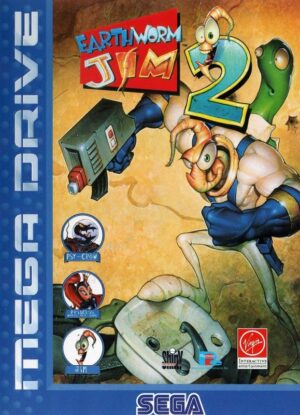Retro Replay Review
Gameplay
The Way Home delivers a deceptively simple yet deeply engaging gameplay loop that hinges on deft timing and smooth controls. Players guide a nimble squirrel along precarious window sills and ledges, clicking to make the rodent jump and moving the mouse to fine-tune horizontal positioning. While the mechanics are straightforward, the screen’s relentless right-to-left scroll demands constant attention and quick reflexes, turning even the tiniest miscalculation into an unforeseen tumble.
(HEY YOU!! We hope you enjoy! We try not to run ads. So basically, this is a very expensive hobby running this site. Please consider joining us for updates, forums, and more. Network w/ us to make some cash or friends while retro gaming, and you can win some free retro games for posting. Okay, carry on 👍)
One of the game’s standout features is its intuitive use of the mouse for both movement and jumping. A single click launches the squirrel into the air, and by subtly adjusting the mouse’s position mid-jump, you can alter trajectory to land on narrow platforms or snag the next cluster of red fruits. This synergy between click-based jumping and lateral mouse movement lends each successful landing a genuine sense of accomplishment, as you physically coordinate with the character’s motion.
Scoring comes from collecting small red fruits scattered across the levels, much like a real squirrel stashing nuts for winter. Each fruit contributes to your running total, giving players a clear incentive to take risks by executing daring leaps across wider gaps. However, one misstep ends the run immediately—there’s no health bar or multiple lives, so every movement feels high-stakes and every fall extra punishing.
Despite its brevity, The Way Home manages to build addictive tension. The game’s endless nature means you’re always chasing a new high score, but do so knowing that one slip-up resets everything. It’s a classic “just one more try” scenario, perfect for short bursts of play on a coffee break or longer sessions devoted to mastering the timing of each jump. The controls remain responsive throughout, ensuring that frustration rarely stems from input lag and more from your own pursuit of perfection.
Graphics
Visually, The Way Home strikes a charming balance between realism and stylization. The window sills and ledges, though simple in design, are richly textured with subtle details—peeling paint, scattered debris, and weathered brickwork—that lend authenticity to the urban rooftop setting. Background elements shift seamlessly, creating the sensation of continual forward motion even though the squirrel itself remains centered onscreen.
The squirrel character model is animated with delightful attention to detail: its bushy tail swishes naturally in midair, and its little paws grasp ledge edges in a manner that feels surprisingly lifelike. When you collect the red fruits, a brief sparkle effect punctuates the action, providing satisfying visual feedback. These flourishes may be small, but they reinforce the tactile pleasure of each successful jump.
Color palettes are soft and inviting, favoring pastel hues for the sky and muted earthy tones for the architecture. This choice of colors ensures that crucial gameplay elements—such as platforms and fruits—stand out clearly, reducing visual clutter. Even in higher-speed runs, you’ll rarely struggle to distinguish where to land or which fruits remain uncollected.
While The Way Home doesn’t venture into graphically intensive territory, it doesn’t need to. Its minimalist approach focuses on clarity and atmosphere rather than flashy effects, creating a cohesive visual experience that feels both polished and purposeful. This emphasis on simplicity underscores the game’s core intent: to hone in on precise controls and incremental skill improvement.
Story
The narrative framing of The Way Home is delightfully understated. There’s no lengthy introduction or cutscene—just the premise that our furry protagonist is making its way back to a cozy tree hollow after a day’s adventures. This bare-bones storyline lends the game an almost fable-like quality, inviting players to imagine their own motivations for the squirrel’s journey.
Despite the minimalism, the game manages to evoke genuine charm and empathy. Each leap feels like a little step toward home, and the scattered fruits become symbols of preparedness and perseverance. The absence of dialogue or explicit plot twists means your own imagination fills in the blanks, making the experience feel more personal than a guided narrative might allow.
The Way Home’s story functions more as a backdrop than a driving force, but that’s precisely its strength. By stripping away exposition, the game focuses your attention squarely on the act of playing, letting moments of near-miss and triumphant landings become the narrative beats. You’re not just chasing a score—you’re helping the squirrel survive and return home safely.
For players who prefer a richer storyline, the lack of character development or side quests may feel sparse. However, for those who appreciate an open-ended scenario that rewards player interpretation, The Way Home offers a quietly compelling journey. The story emerges out of gameplay, not the other way around.
Overall Experience
The Way Home is a masterclass in minimalism done right. It demonstrates how focused mechanics, modest visuals, and a simple premise can combine to form a truly addictive experience. Each run feels fresh because even minor adjustments in timing or mouse movement can lead to vastly different outcomes—making you eager to hone your skills and push just a bit further.
Accessibility is another highlight. With no complicated menus or overwhelming options, players of all ages and skill levels can pick up the game in seconds. The single-mouse control scheme ensures that frustration is reserved for missed jumps rather than confusing input methods. Even veterans of endless runners will find themselves drawn in by the precision required.
On the downside, the lack of variety beyond the default endless mode means some may crave additional features—such as new environments, obstacles, or power-ups—to keep long-term engagement high. But for those who appreciate purity of design, The Way Home’s singular focus is a selling point rather than a detriment.
In sum, The Way Home offers a bite-sized yet gratifying gaming session that’s perfect for quick play or for mastering through repeated attempts. Its blend of responsive controls, charming visuals, and understated narrative yields an experience that’s easy to recommend for anyone seeking a simple but challenging arcade-style game. Just watch your step—homeward bound, one leap at a time.
 Retro Replay Retro Replay gaming reviews, news, emulation, geek stuff and more!
Retro Replay Retro Replay gaming reviews, news, emulation, geek stuff and more!


Reviews
There are no reviews yet.